Transite Asbestos – 4 Identifiable Characteristics
This article is written as a resource to help building owners identify if they have an old transite asbestos roof. The characteristics referred to in this article focus on old transite panels manufactured in the US from 1929 -1985 and classified as 'Category II Non-Friable ACM (asbestos-containing material). Many of these roofing systems have already passed the end of their 50-70 year lifespan. Readers can find additional history on the J&M Transite brand here.
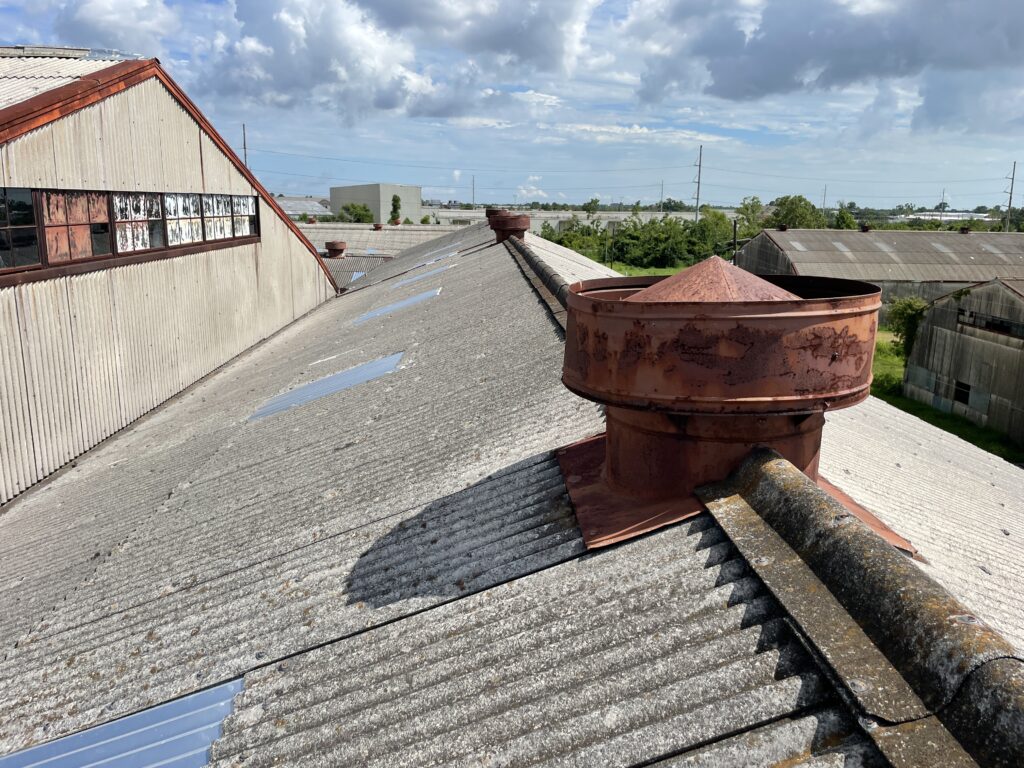
Difficulties Identifying Transite Asbestos
Time: Time plays a critical role in identifying transite asbestos products. Sure, it takes time to climb onto your roof and investigate. But apart from that, we must consider how long the roof has existed on your building. A roof goes through a lot over decades. How many hail storms-stripping away the (70-year-old) protective coating? How many times has it been painted, scraped, stripped, damaged, or repaired? On top of that, not all building owners are fortunate enough to have been around as long as the original roof system.
The point is that these asbestos-containing roof systems have been in place for a long time. Some building history inevitably gets lost when transferring ownership and staff turnover spanning decades. In this case, many building owners may not even know if they have crumbling carcinogenic material as their roof system.
Many transite asbestos roofs were painted and/or covered with spray foam, rubber, or TPO within the last few decades. And once covered, it becomes harder for owners and maintenance managers to remember if it was ever a transite roof.
Proximity: Some of the buildings have incredibly difficult areas to get to. Commercial roof inspections are dangerous, even more so when a roof is potentially 70 years old. Years of weather, debris, and the aggressive environment slowly deteriorate the material, making it brittle and hazardous. Essentially making it 'friable,' the classification of an asbestos-containing material (ACM) capable of being reduced to powder and posing severe health risks.
Knowledge: Building owners who have purchased older buildings are encouraged to consider the year it was built as a starting point. Much of this information is difficult to find. And builders used many kinds of ACM roofing products throughout the 20th century. Maintenance managers should be on the lookout for any of the following characteristics. Many large facilities that have added on over the years still have sections of Transite on their buildings that have never needed repair. But time is running out, and these roof systems must be addressed before it's too late. Certain industries continue to benefit from their transite roof once it's been restored.
Given that these roofs have such a chameleon-like nature, we want to share these four identifiable characteristics of transite asbestos roofing systems to help building owners recognize if they have the option for a retrofit restoration. Many of these roofing systems have been restored in the past and now retain the material's friendly characteristics.
1. Color Variations of Transite Asbestos
Transite roofing panels are a majority mixture of Portland cement and asbestos fibers. Primarily light gray in color, when the panels were new, building owners were encouraged to paint their transite roofs. In fact, painting and recovering old roofs over the years as a maintenance practice has resulted in many transite roofs staying hidden for a long time.
Not just painting and covering affect how the material ages. Geological factors also contribute to the current color of these panels. Once the initial protective coating is worn-off, aggressive weathering like hail and wind continues to damage and break apart the cement matrix responsible for holding the material together. This allows the elements to infiltrate the structure, and nature takes its course. The most common color variations we find today are listed below.
What colors to look for:
- Dirty Grey
- Dirty Tan/Brown
- Dirty Multi-color mix (like gravel)
- Black
- Green (Lichen/moss grows if disturbed panels have enough moisture)
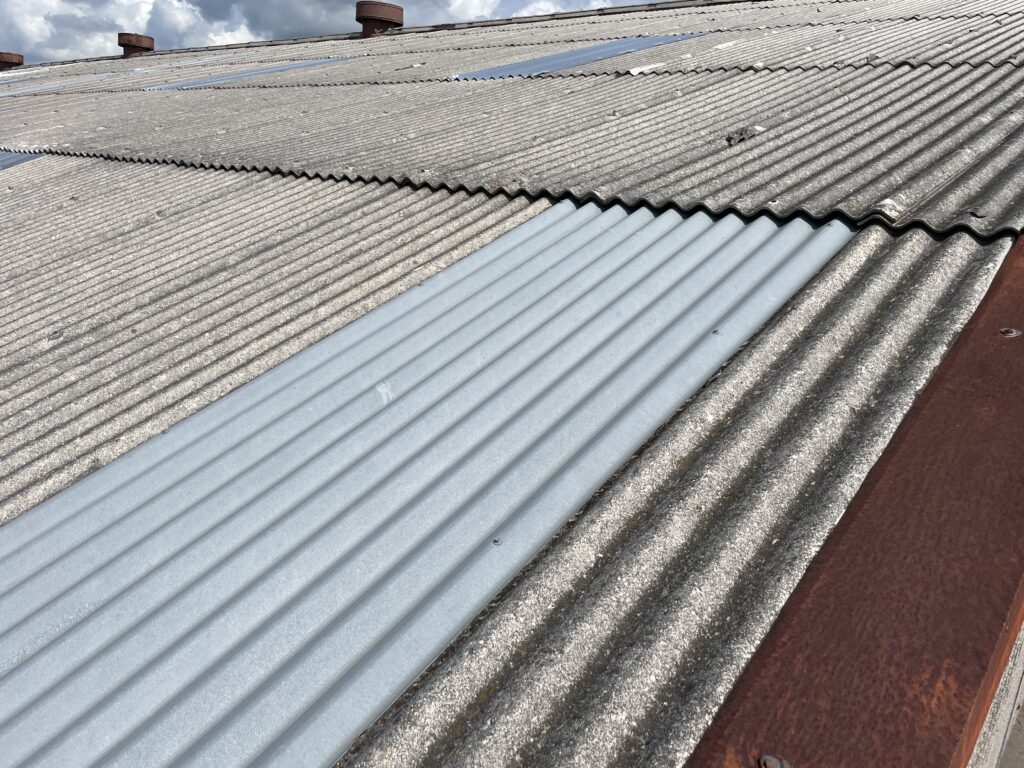
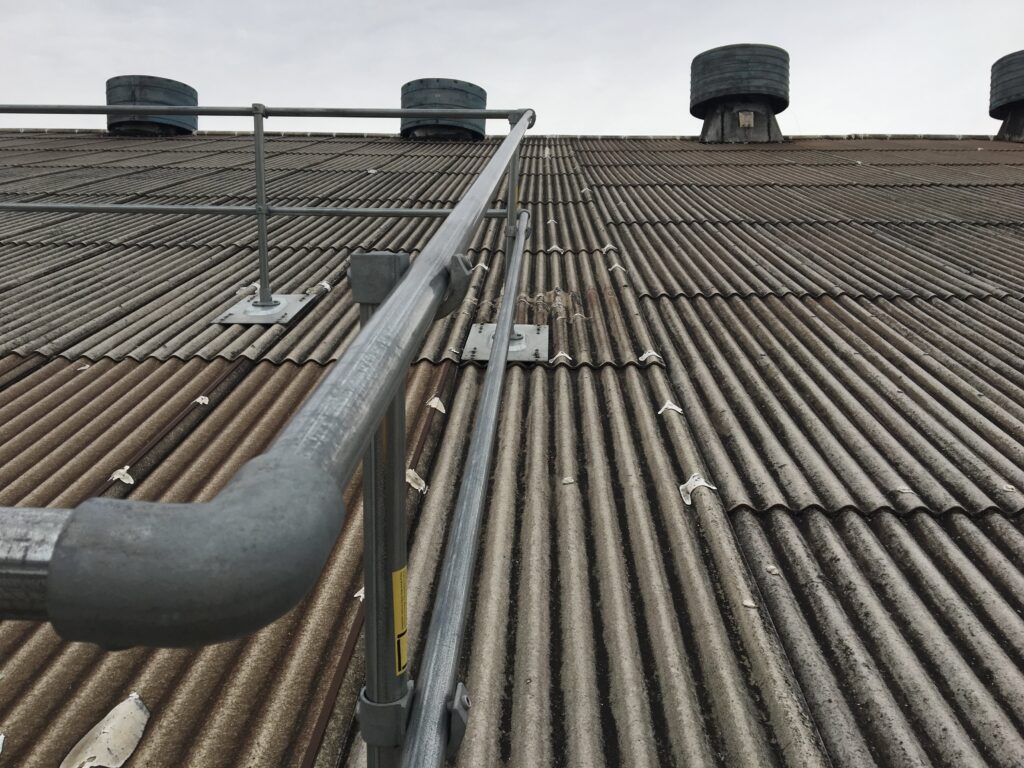
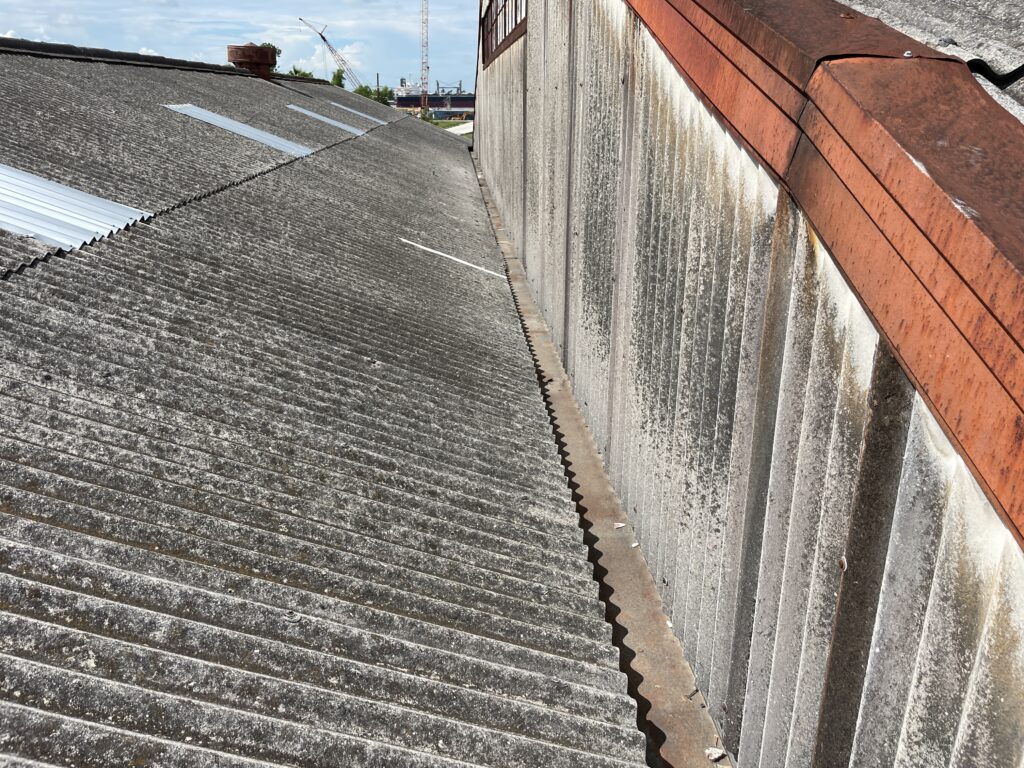
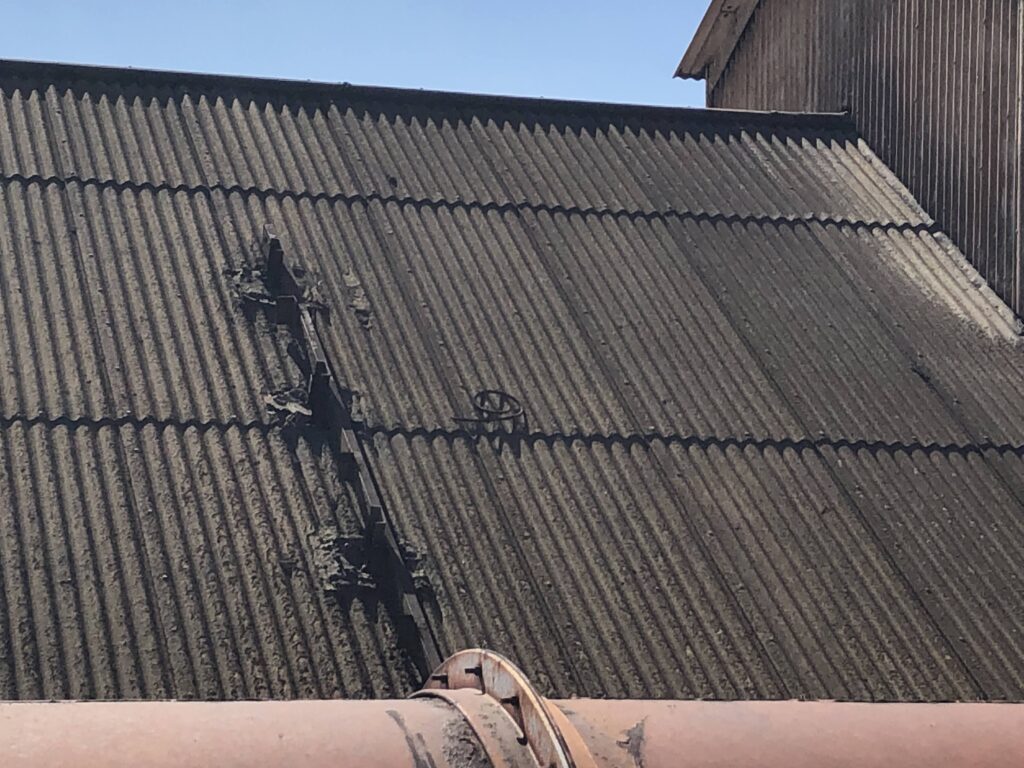
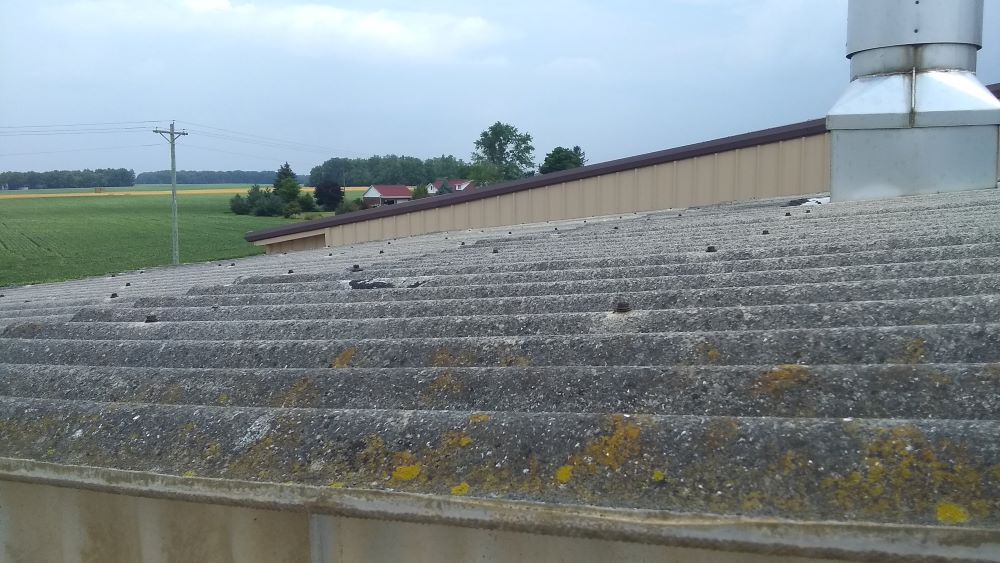
2. Textures of Transite Asbestos
The most popular transite roofing panels we’re wet-pressed into form. The surface felt similar to running your fingers across painted cement. However, time has worn these roofs and many of them have already begun to crack, crumble, and erode. This is dangerous because it introduces asbestos fibers into the building environment.
Equally important for consideration are the other factors playing into the way transite is rotting. The building's use will absolutely contribute to the current appearance and state of the material.
What to look for:
Textures today are contingent on factors like geographic location and the surrounding environment. Look for gritty, concrete-like, fibrous ends of the panels. The panels themselves could be growing mold or moss due to asbestos being an organic material. You can also see 'scoring' on the transite panel below. This could be caused by any kind of tool or falling debris. The gutter below collects the run-off fibrous material and disburses it with rainwater.
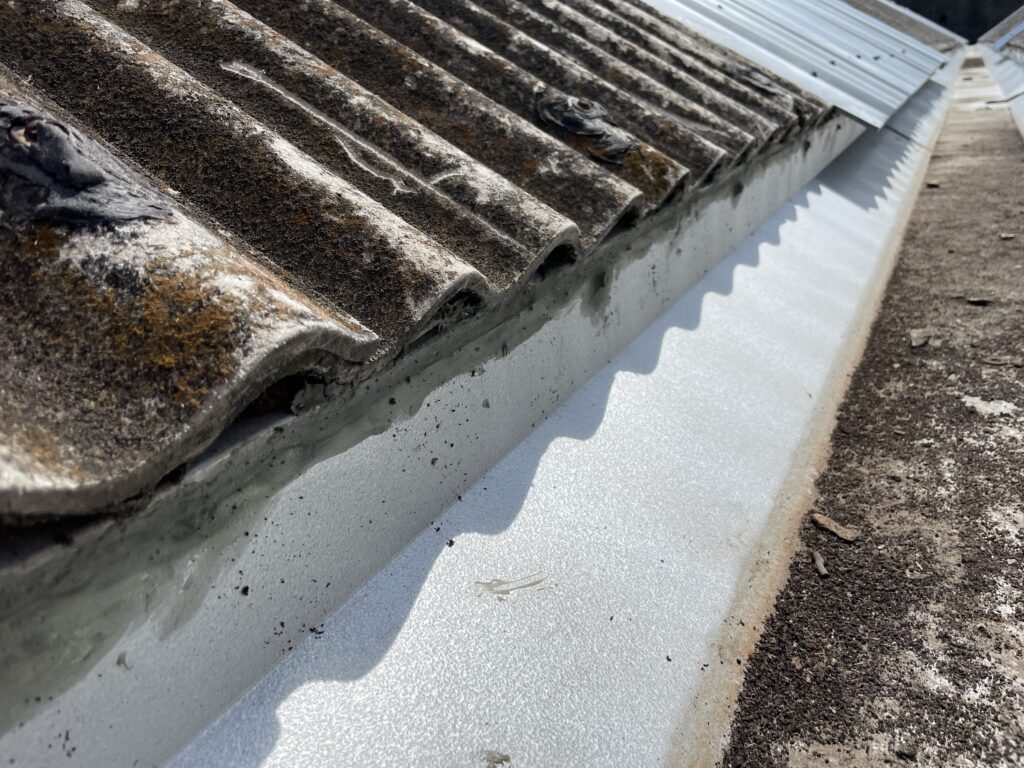
3. Transite Profile Shape
The most common profile shape was a corrugated panel with rounded ribs spanning 4.2” center to center. The panels themselves were manufactured to have a thickness of 7/16".
What to look for:
Sheet lengths of 8 feet are cited as the most common. However, sheet lengths can vary between 3' to 11'. There were also sheet lengths spanning 3'.6" - 10'6".
Look for the rounded top of the ribs, wider than most standing seam metal roofs. Also, look for the raised seams where the panels overlap. There are often visible gaps where they meet. The example photo below shows the large overlap of the panels. This photo also shows that someone has covered a section of the transite with fiberglass panels. This is not a recommended fix for any concrete and asbestos roof type because it doesn't effectively seal the hazardous material. Simply covering it does not mitigate the health risks.
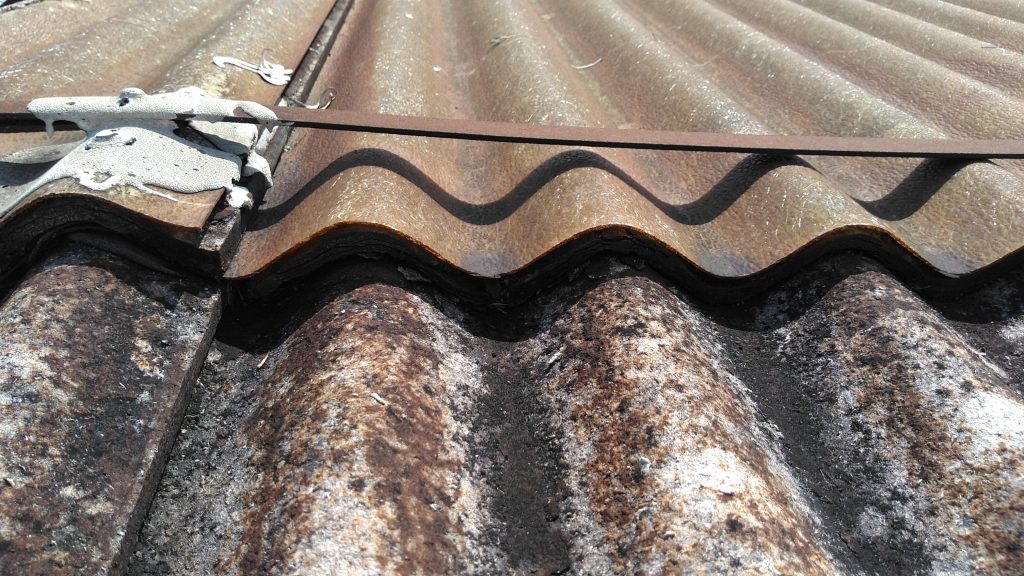
4. Transite Panel Weights
When you look at a transite panel you can tell it’s heavy. In fact, these panels were made with a ratio of anywhere from 45-50% asbestos, by weight. You read that right -up to 50% asbestos. Photos from a historical JM transite spec sheet published in 1944 also highlight this fact along with a breakdown in panel weight.
The corresponding weights regarding sheet/panel size are as follows:
Sheet Lengths: 3' to 11'.
Sheet Weights: 43.5 lbs - 157 lbs.
Furthermore, many different types of asbestos used in transite varied, according to what was available to the manufacturer at the time. Asbestos was being imported from other continents to the US.
Again, that’s why it's essential to identify these particular roofing systems soon and have them restored and brought up to code. Potential health hazards will continue to arise the longer they go unidentified.
Transite Asbestos Practical Hazards
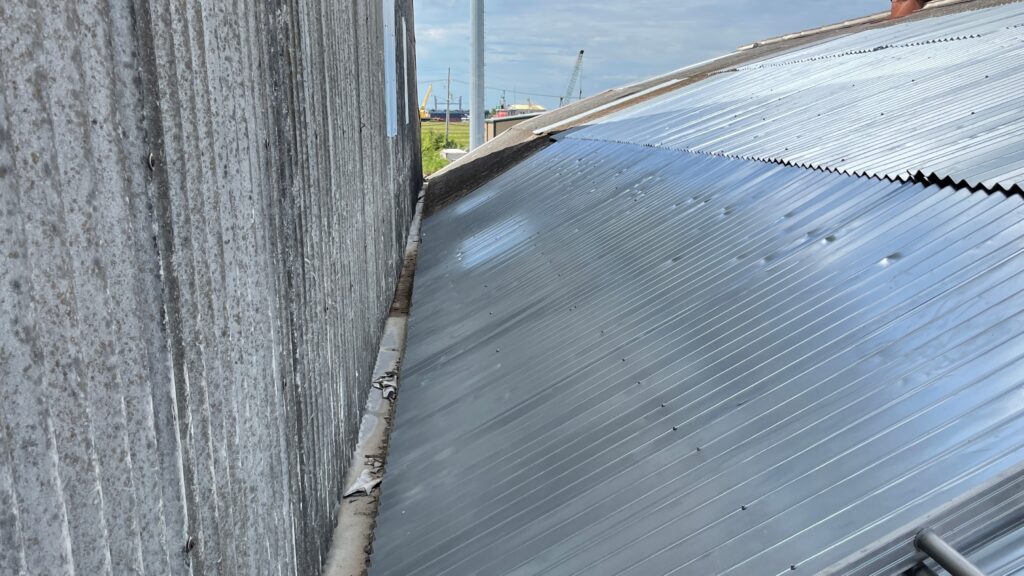
Do Not Attempt to Fasten Metal to Cover Transite Asbestos
Depending on where the building is located, thermal contraction and expansion frequency can speed up the material's degradation. In addition, there's the case of extra penetrations. In the photo above, we can see someone fastened metal panels over the original old transite asbestos panels. Not a good idea.
Transite Asbestos Remediations are Dangerous
It is incredibly unsafe to add any extra penetrations that weaken the structure of asbestos cement products. The penetrations enter Transite through the top of the panel and go all the way through. This breaks apart the cement matrix in even more areas to create a constant ‘rubbing’ abrasion. Bear in mind, these sheets are made of cement. Cement can crumble from enough friction and in the case of transite, run the risk of becoming a Friable ACM. The weight of these panels can be up to 157 lbs. Introducing new penetrations will accelerate the already weakening integrity of the material year after year following seasonal changes. NO ONE should be made to work underneath a 100,000-pound roof, held together by accelerated crumbling carcinogenic cement.
The movement causes the fasteners to back out which allows moisture to enter through the panel, continuing the freeze/thawing process. Every time the water freezes it expands - breaking the cement matrix further apart and displacing the asbestos fibers wherever the water goes.
Lastly, wet insulation is already a health hazard. Wet insulation with added transite-asbestos debris isn’t any better. If your Transite roof is leaking you need a qualified Transite Roof Consultant to assess whether or not your roof is a candidate for a retrofit restoration. Restoration of any kind of asbestos-containing roof system is preferable to tear-off and relocation to a landfill.